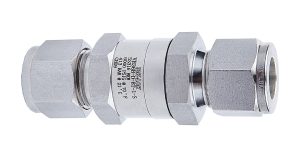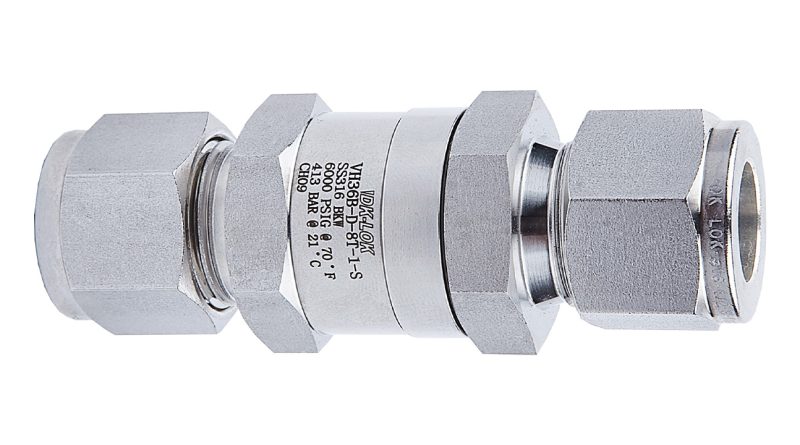Important Tips to Choose the Best DK LOK Fittings

In your fluid system applications, it’s therefore crucial that you select the correct DK LOK fittings to ensure that your applications are not only reliable, safe and performing to optimum levels. As with any other component, choosing between a permanent magnet and an induction motor may greatly affect the lifespan and performance of your system if engaged in facilities related to the distribution of gas, the development of analytical instruments or industrial applications. This detailed manual will take you through five critical stages with which you will be able to decide on the appropriate DK LOK fits.
1. Material Compatibility Matters
Material compatibility must be carefully considered when working with fluid systems in order to avoid corrosion, contamination, and premature failure. Your process fluid and the operational environment should be ideally matched when selecting a fitting material. For the majority of applications, stainless steel fittings, especially those in grades 316 and 304, offer exceptional durability and resistance to corrosion. However, you may need to take into account specialty materials like Hastelloy or Monel when working with more corrosive compounds.
Consider also the long term effects of exposure to your process media, not just the chemical resistance of the material. Thus, over time environmental variables changes, pressure cycles, and temperatures can have an impact on the material performance. For instance, brass couplings are perfect for use in water systems but might not suit equipment that deal with aggressive chemicals or equipment that must deliver only ultrapure outputs.
Using criteria for selection of materials it is also relevant to take into account any industry specifications or regulation. It is particularly important for items that need the provenance and accreditation of the materials used in production, including the electronics manufacturing that creates computer chips and microprocessors, the drug manufacturing that turns corn into ethanol, or the food processing that turns corn into corn syrup.
2. Understanding Pressure and Temperature Ratings
The operating limits of each fitting are determined by its particular pressure and temperature ratings. These ratings are important safety and performance metrics that need to be carefully considered; they are more than just numbers on a specification sheet. The maximum pressure and temperature your system may encounter, together with any possible spikes or unique operating situations, should always be taken into account when choosing fittings.
It’s critical to realize that pressure ratings generally drop with rising temperatures. A fitting that is rated for high pressure at room temperature may not be appropriate for the same pressure at higher temperatures due to this inverse relationship. To account for unforeseen system differences, always consult the pressure-temperature curves supplied by the manufacturers and add a safety margin to your calculations.
Working pressures should never be higher than those advised by the manufacturer because doing so may result in hazardous failures. Furthermore, take into account the application’s cycling characteristics; frequent variations in temperature and pressure can compromise the connections’ long-term integrity. To guarantee a more dependable and secure system, it is always preferable to select fittings with ratings higher than your current needs.
3. Size and Configuration Selection
Maintaining ideal flow characteristics and avoiding pressure drops in your system depend on fittings that are the right size. To prevent turbulence or constraints, the fitting’s internal diameter should match the size of your tubing and your flow requirements. Keep in mind that while oversized fittings may result in dead areas and possible contamination spots, inadequate fittings may produce excessive pressure drops.
Selecting the appropriate size is only one aspect of configuration selection; another is comprehending how the fitting will be included into your system. Take into account elements like available space, ease of maintenance, and the requirement for future adjustments. Although straight fittings may appear to be the most straightforward option, elbow or tee arrangements may improve system layout and lessen connection stress.
Consider the installation procedure and any potential need for specialized tools when choosing setups. While some arrangements can make it easier to install in confined locations, others might give heavy equipment or tubes better support. The objective is to design a system that is not only useful but also easy to set up and maintain.
4. Quality and Manufacturing Standards
Fitting performance and dependability are directly impacted by manufacturing quality. High-grade fittings go through stringent quality control procedures and are made to exact tolerances. Seek out fittings that are certified for your application and that adhere to pertinent industry standards. This could involve industry-specific certifications or standards from groups like ASTM and ASME.
Consistency in material qualities, surface polish, and dimensions should be guaranteed throughout the manufacturing process. For high-purity applications or systems where cleanliness is crucial, surface polish is especially crucial. Particle formation, challenging sealing, or places where pollutants might build up are all consequences of poor surface finish. Furthermore, the integrity of the fittings prior to installation is preserved through appropriate handling and packing during manufacturing.
Another crucial component of quality control is traceability and documentation. Material certificates, test results, and traceability data are supplied by reputable producers. These records give you peace of mind about the genuineness and caliber of the fittings you’re employing in your system in addition to assisting in ensuring regulatory compliance.
5. Installation and Maintenance Requirements
If not fitted and maintained correctly, even the best fittings may malfunction. Think about the installation specifications, such as any specialized equipment or instruction required. To guarantee adequate sealing, certain fitting designs need particular assembly techniques or torque requirements. Prior to making a choice, being aware of these needs may help prevent installation issues and guarantee long-term dependability.
Your choosing strategy should also take routine maintenance into account. Certain fitting designs are easier to maintain than others, making component replacement and inspection simpler. Select fittings that can endure numerous cycles of assembly and disassembly without losing their integrity, taking into account how frequently the system will need to be disassembled for cleaning or repair.
Remember that installation and maintenance staff need to be well trained. If not installed correctly, even the best fittings in the world won’t function as intended. When choosing your fittings, take into account the availability of technical assistance, installation instructions, and training materials. This guarantees that the fittings can be handled correctly by your team for the duration of their lives.
Conclusion
From material compatibility to installation requirements, selecting the appropriate DK LOK fittings necessitates careful consideration of a number of criteria. These five suggestions can help you make well-informed choices that result in fluid systems that are safer and more dependable.

